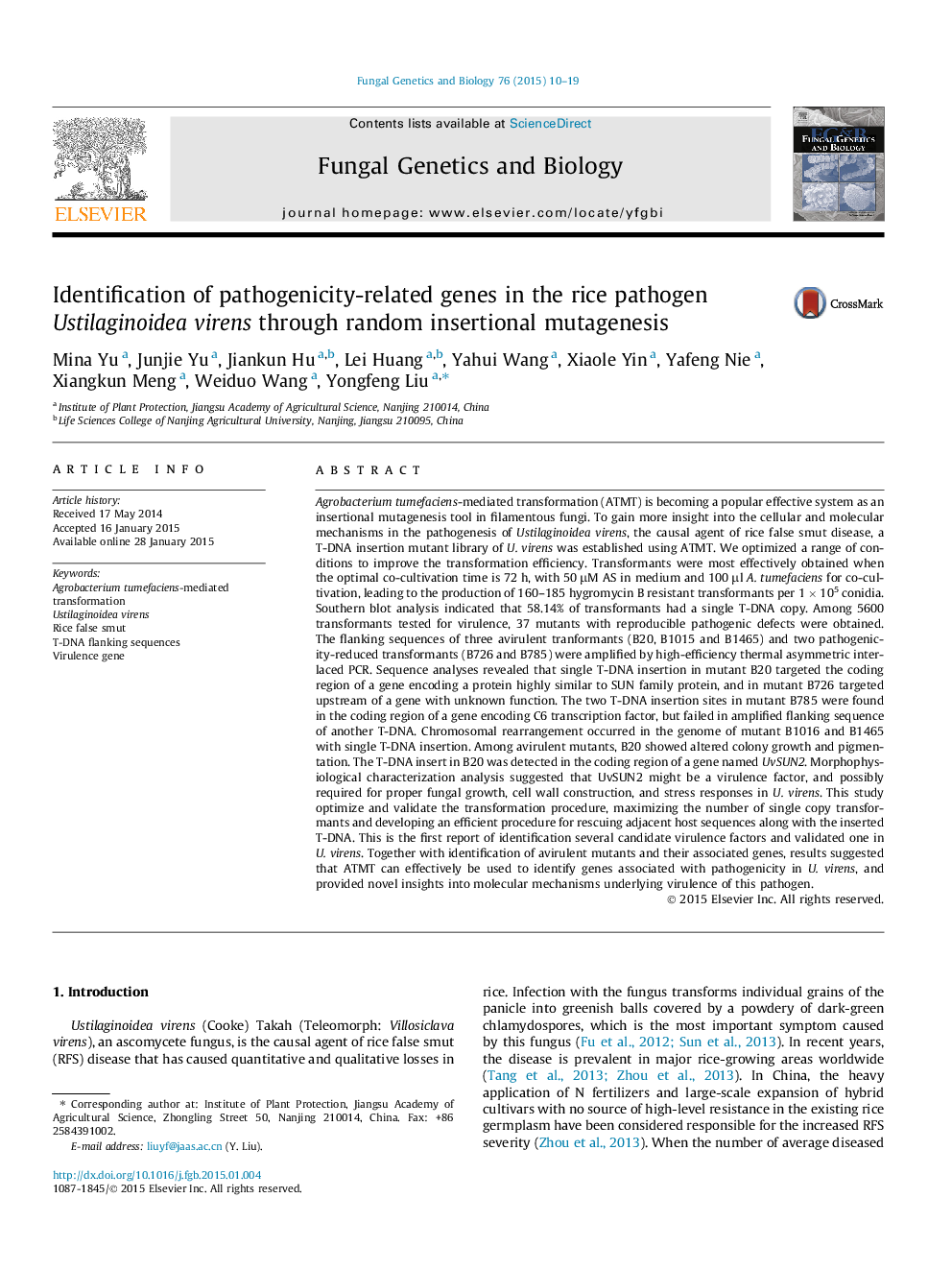| کد مقاله | کد نشریه | سال انتشار | مقاله انگلیسی | نسخه تمام متن |
|---|---|---|---|---|
| 2180763 | 1550015 | 2015 | 10 صفحه PDF | دانلود رایگان |

• We systematically optimized and assessment ATMT for Ustilaginoidiea virens.
• We established an available protocol for identification the genes through hiTAIL-PCR.
• We deduced a novel gene UvSUN2 corresponding for the virulence of U. virens.
Agrobacterium tumefaciens-mediated transformation (ATMT) is becoming a popular effective system as an insertional mutagenesis tool in filamentous fungi. To gain more insight into the cellular and molecular mechanisms in the pathogenesis of Ustilaginoidea virens, the causal agent of rice false smut disease, a T-DNA insertion mutant library of U. virens was established using ATMT. We optimized a range of conditions to improve the transformation efficiency. Transformants were most effectively obtained when the optimal co-cultivation time is 72 h, with 50 μM AS in medium and 100 μl A. tumefaciens for co-cultivation, leading to the production of 160–185 hygromycin B resistant transformants per 1 × 105 conidia. Southern blot analysis indicated that 58.14% of transformants had a single T-DNA copy. Among 5600 transformants tested for virulence, 37 mutants with reproducible pathogenic defects were obtained. The flanking sequences of three avirulent tranformants (B20, B1015 and B1465) and two pathogenicity-reduced transformants (B726 and B785) were amplified by high-efficiency thermal asymmetric interlaced PCR. Sequence analyses revealed that single T-DNA insertion in mutant B20 targeted the coding region of a gene encoding a protein highly similar to SUN family protein, and in mutant B726 targeted upstream of a gene with unknown function. The two T-DNA insertion sites in mutant B785 were found in the coding region of a gene encoding C6 transcription factor, but failed in amplified flanking sequence of another T-DNA. Chromosomal rearrangement occurred in the genome of mutant B1016 and B1465 with single T-DNA insertion. Among avirulent mutants, B20 showed altered colony growth and pigmentation. The T-DNA insert in B20 was detected in the coding region of a gene named UvSUN2. Morphophysiological characterization analysis suggested that UvSUN2 might be a virulence factor, and possibly required for proper fungal growth, cell wall construction, and stress responses in U. virens. This study optimize and validate the transformation procedure, maximizing the number of single copy transformants and developing an efficient procedure for rescuing adjacent host sequences along with the inserted T-DNA. This is the first report of identification several candidate virulence factors and validated one in U. virens. Together with identification of avirulent mutants and their associated genes, results suggested that ATMT can effectively be used to identify genes associated with pathogenicity in U. virens, and provided novel insights into molecular mechanisms underlying virulence of this pathogen.
Journal: Fungal Genetics and Biology - Volume 76, March 2015, Pages 10–19